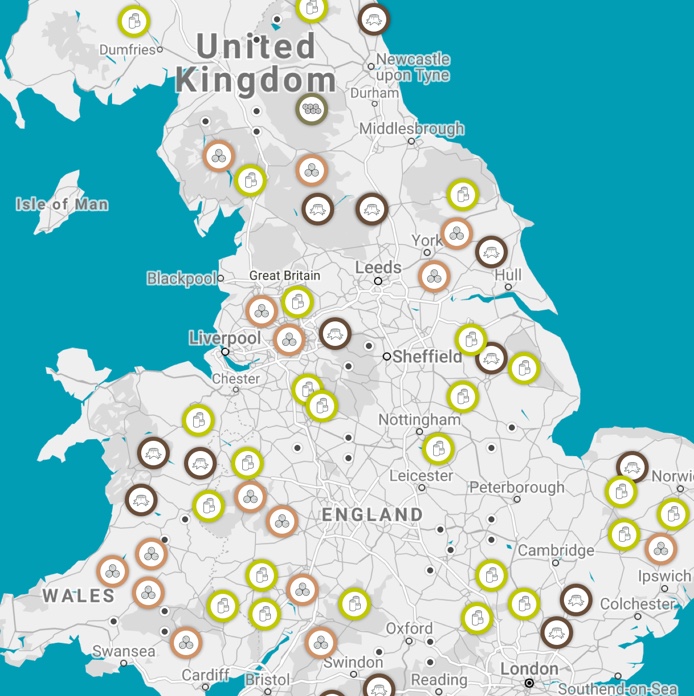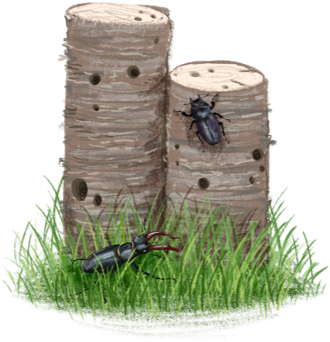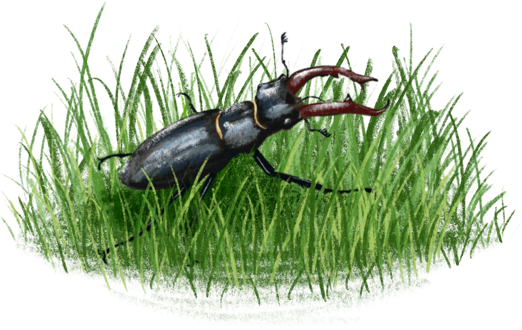Main Menu
Home » How to build a log pile
Dead wood provides food and homes for a multitude of wildlife species. From grand, ancient oak trees, to a fallen apple tree limb in an orchard, to an old buddleia stump in your garden, dead wood is actually teeming with life.
You can create your own dead wood habitats out of fallen or cut trees, spare firewood, old off-cuts and wood chips. Log piles can take many forms:
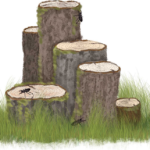
Log pyramid (or stumpery) provides rotting wood underground which is great for stag beetles. Bury several logs upright in the soil, approximately 50cm deep. Logs should be broadleaved wood (not conifers) and at least as thick as an adult’s arm.
Make sure that there is space (filled with soil) in between the logs so that stag beetles can use all parts of the log. (Female stag beetles lay their eggs in the soil next to rotting wood and the larvae move in and out of them)
In dappled shade is best to prevent the logs drying out.


Log piles can provide food and shelter for so many species. Frogs and toads hibernate here, hedgehogs use it for nesting, and the insects that live in log piles are a source of food for other animals, including birds.
Just lay down the logs you have, they can be neat or untidy, large or small and a mix of species. You can incorporate dead leaves which will attract amphibians and small mammals to hibernate. Different locations attract different species. In shade, the wood stays damp and is good for fungi, mosses and some invertebrates. In full sun, the wood dries out but is good for solitary bees.
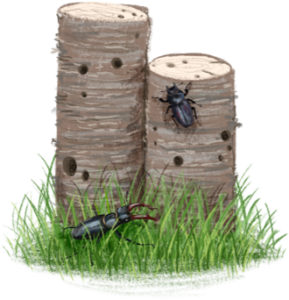

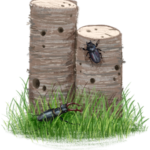
Keeping the stumps of trees and bushes that have either died naturally or have been cut down is really important. They will already have fungi and insects living in them, the parts above and below ground providing different conditions for a variety of species to use.
Haven’t got any dead wood? Start collecting bits of wood from pruning, ask neighbours or even buy some. But please don’t take wood from woodlands as this will remove precious habitat.
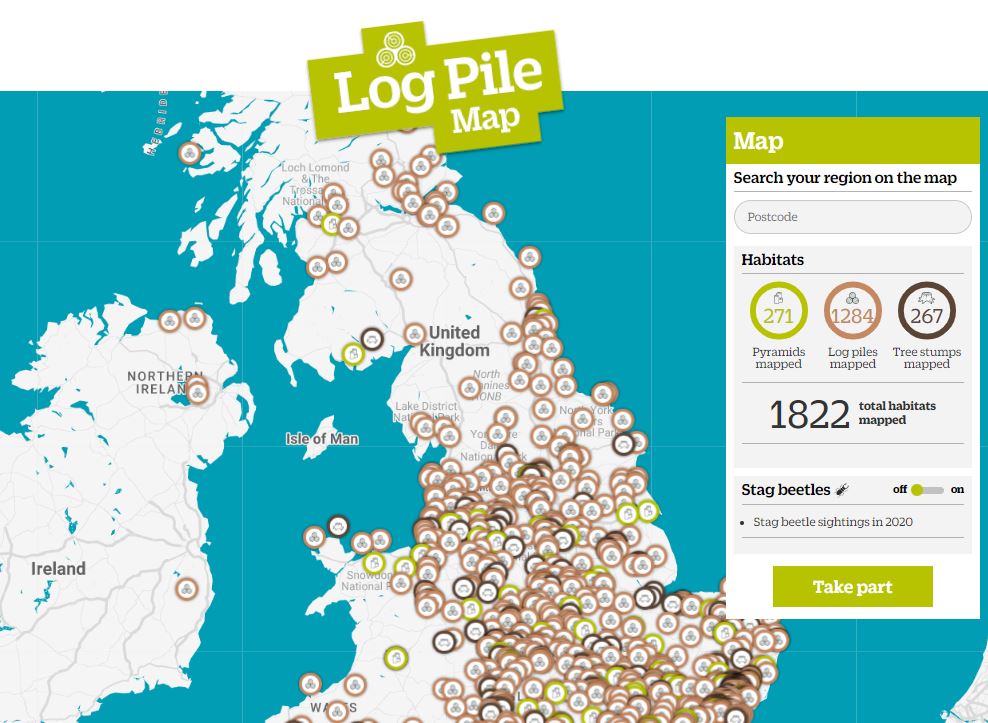
Whether in your garden, communal green space, schoolground, church yard, park or woodland, please map your log piles to provide us with information about what dead wood habitats are out there and, perhaps even more importantly, to inspire others to do the same.
